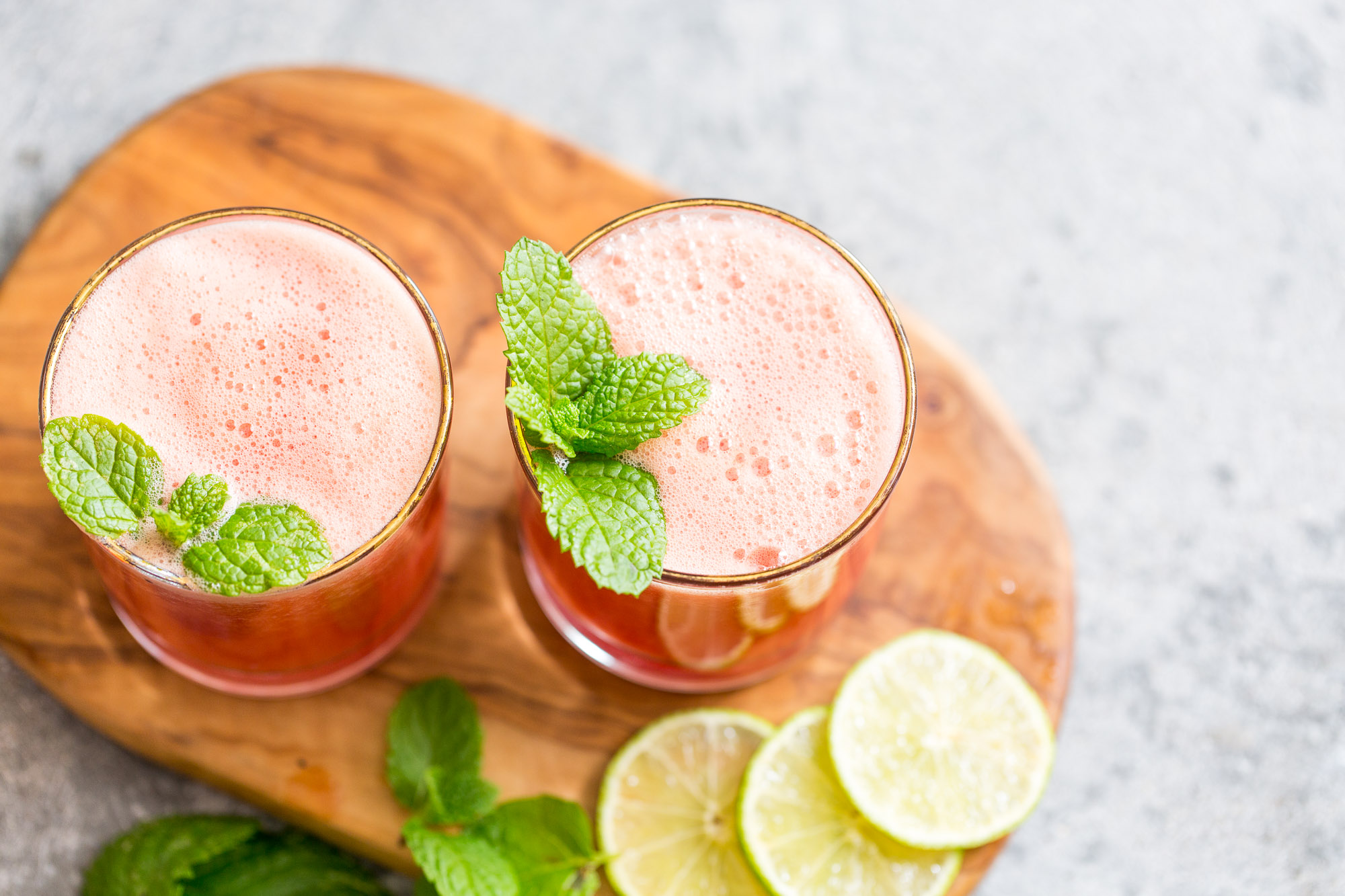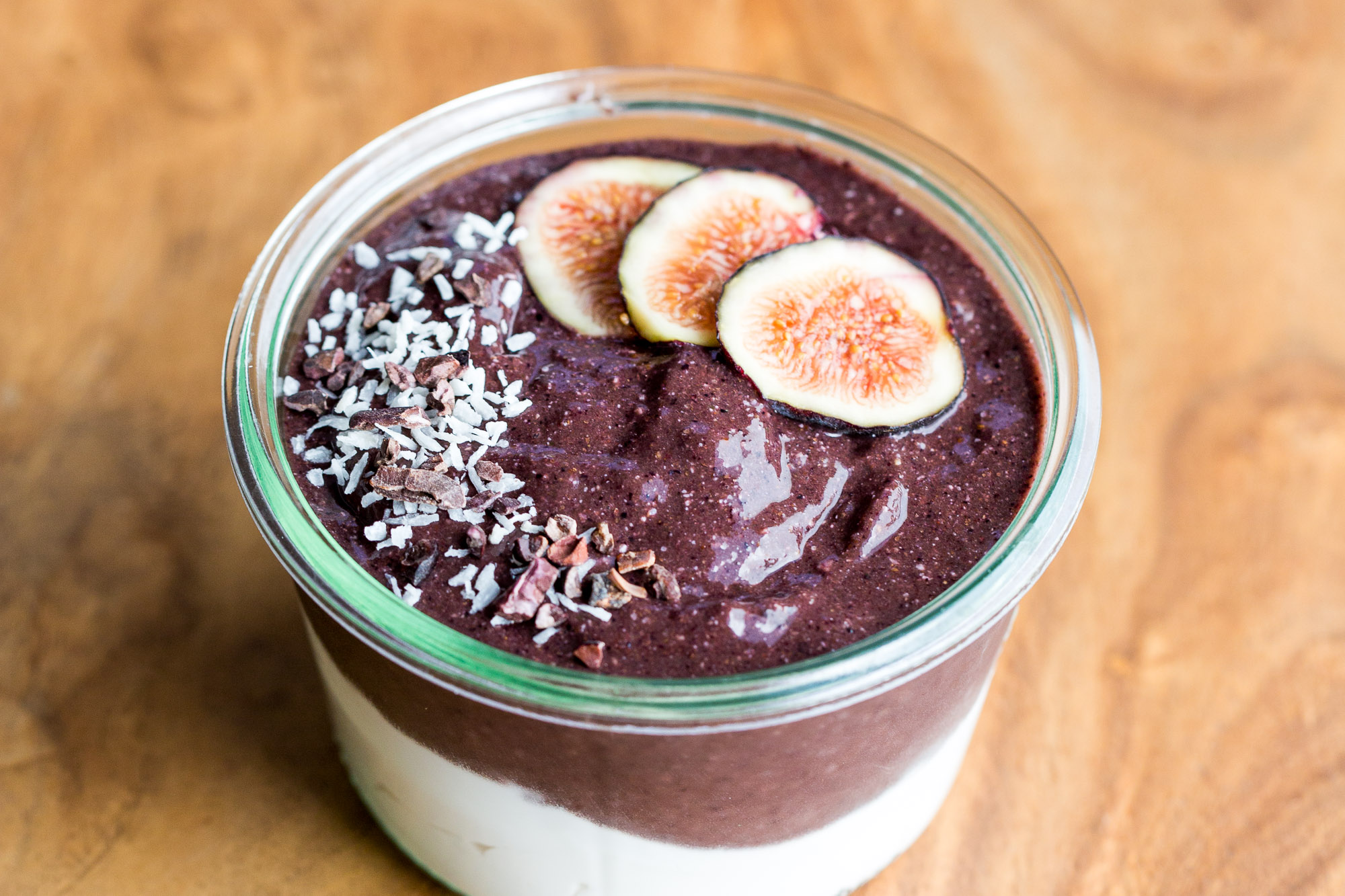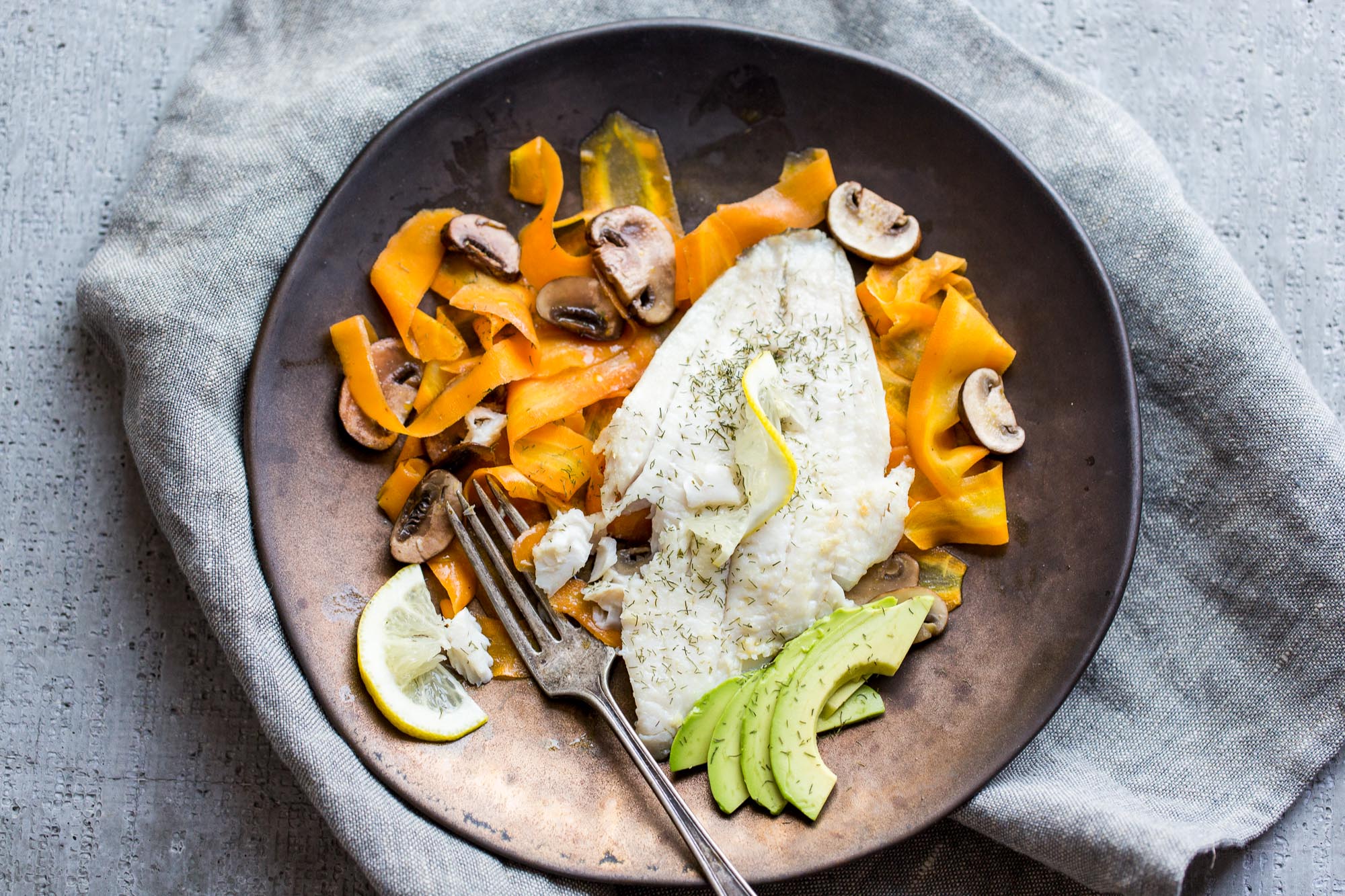Watermelon Water & Staying Hydrated

*We’re back, folks. Thanks for letting us enjoy a summer break and some time off. In the meantime, Natalie and I trained for, and rode in the 2016 Pan-Mass Challenge, the largest athletic fundraiser in the country. All donations go directly to cancer research at the Dana-Farber institute. If you know someone fighting cancer, or would like to donate in someone’s honor, here’s the link.
After five years of San Francisco, this was our first real summer in a while. And because Nat has an ideal temperature range of 1.6ºF, we spent some time trying to “beat the heat.”
Which is how we found ourselves at the market, choosing a ripe watermelon. At the store, among the other melons, our particular fruit didn’t feel that ambitious. Once we got it home and plopped it on the the cutting board, however, it felt about 20 pounds too ambitious.
We ate slices, filled jars, and still had half a melon left. We needed another solution. Enter the “throw-it-in-the-blender” method.
The frothy pink juice is great plain, or with a little lime juice or fresh mint. Because we spent a lot of time training for a bike ride this summer, we loved having a post-exercise, electrolyte-filled drink in the fridge. Watermelon is high in lycopene, and has minerals which are important to replenish after working out, too. (WH Foods)
Because one melon can make a lot of juice, we also froze jars of juice. We used these for camping trips as ice packs in our cooler - it saves space, and melts into a delicious post-hike treat.
Having watermelon juice in the fridge got us drinking more liquids, but we treated it more like a Gatorade substitute than plain water. Fresh fruit juices can be hydrating, but can also have a lot of sugar, so too much at once spikes blood sugar and puts a strain on our bodies.
All of this juice got us thinking about hydration in general. What’s really awesome, is that proper hydration is one of the the easiest and cheapest steps to take for better health.
Five tips on hydration:
As human beings, we have a great signal that tells us when to drink. It’s call thirst. Obey. Thirst is the best indicator of whether we should drink liquids.
Ditch the 8 cups per day conventional wisdom. It’s a pretty broad guideline that doesn’t make much sense for everyone. A better guide is ½ your weight in ounces per day.
Coffee, caffeinated teas, alcohol, sugar, and processed foods all may drive up our need to hydrate. When we drink coffee, we also try to consume the same amount of extra water throughout the day.
- Hydrating doesn't mean just water. Broth, juice, herbal tea, and vegetables are all hydrating.
- Don't over do it. Our bodies can only absorb water at a limited rate. Too much at once can flush out our system, eliminating vitamins and minerals before we have a chance to use them. Remember, #1 - listen to your thirst.
So, what are some ways to make water more appealing? Here’s a few things to try to make a habit that sticks:
Set an alarm every hour at work - a cue to stand up, stretch, and have some water.
Aim for a 1/2 cup of water every waking hour.
Make water more fun! Steep a few pieces of fruit or herbs in a jar of water. We like these combos:
Raspberry, lemon, and mint
Frozen mango and mint
Lemon and cucumber
What's your favorite way to stay hydrated?
Photography team on the West Coast. Mostly working with companies and magazines in the food world. Our clients are proud of their product, story, or mission (or all three), and we help them produce their idea into a reality.












